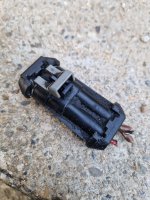Only if you feel safe to do so , I would put battery live power directly to the bus bar terminal at the heater plugs for about 10 seconds and then see if starts straight away. You may want to unplug the heater plug relay to isolate it.
Do not leave on as it will burn out your new heater plugs!!!
If vehicle starts easily then check at relay and wiring etc related to it as has been suggested.
If this test makes no difference to cold starting I would carry out a compression test on engine as I mentioned.
Do not leave on as it will burn out your new heater plugs!!!
If vehicle starts easily then check at relay and wiring etc related to it as has been suggested.
If this test makes no difference to cold starting I would carry out a compression test on engine as I mentioned.
Last edited:



